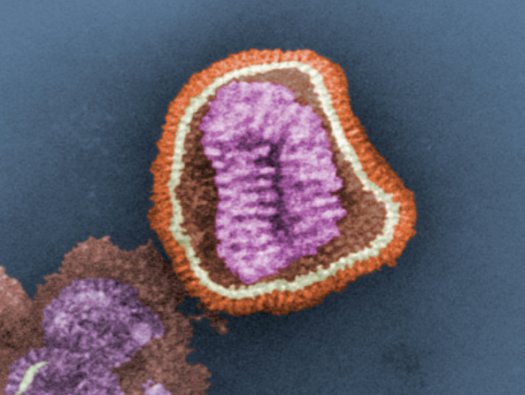

Just a handful of genetic mutations can turn bird flu into a highly infectious pathogen that could wreak havoc on humans, according to a new paper published today. It’s the first of two controversial virus mutation papers to get its day in the sun, and it shows how the H5N1 flu could evolve to infect mammals.
To test the virus, researchers led by Masaki Imai and Yoshihiro Kawaoka of the University of Wisconsin-Madison combined elements of avian flu with a recent pandemic human flu, the 2009 variant of H1N1 (you may know it as the swine flu). The new flu was capable of passing from experimental ferret to ferret through the air. (Ferrets are considered the best animal model of how flu works in humans.) The sick ferrets lost weight and had respiratory lesions, but they did not die.
“The findings described here will advance our understanding of the mechanisms and evolutionary pathways that contribute to avian influenza virus transmission in mammals,” the authors write.
To understand what’s so dangerous about this virus, it helps to understand a bit about how the flu and its variants work. The name describes the molecular components of the virus; so H5N1 flu, for example, is a variant with type 5 hemagglutinin and type 1 neuraminidase proteins.
Humans have no immunity to flu viruses with a type 5 hemagglutinin. If it were to spread among people, a pandemic would likely ensue. But while H5N1 flu has been around in poultry for at least 16 years, there are only a handful of reports of human cases. The human cases have been unusually severe — at least compared with other animal-transmitted flu viruses — but the lack of a human-to-human transmission raised some questions about whether this flu could really adapt to infect us. Perhaps the H5 protein didn’t work very well in mammalian cells.
This research helped answer that question. Not only could an H5 flu indeed mutate to become transmissible among mammals, it only required four mutations to do so.
The researchers carefully figured which mutations would help the virus shift to a variant that would thrive in humans. Their paper is freely available online today, published by the journal Nature.
The scientists are also careful to note that their mutant virus possessed many human-virus traits, which might not exist in any naturally evolving H5 virus. What’s more, H5 viruses lack certain amino acids that would help them reproduce in mammals. And it’s not clear that the virus, if it evolved to infect humans on its own, would follow a similar pathway. Still, the crucial point is that it didn’t take very much mutation at all.

This work is important because understanding the genetic mechanisms for this mutation could go a long way in fighting the disease if it does ever evolve naturally. Still, who should get to read it? Is it too dangerous to publish in the public domain, and is it something that should be left in the lab? The work was held on hiatus for a few months as scientists and security experts debated these questions. The prospect of censoring it raised alarm bells among scientists and freedom of information advocates, while experts pointed out that it would probably get out anyway. “Any restricted information distributed to university laboratories would not stay confidential for long,” as Nature‘s editorial board pointed out today.
Nature also quotes biosecurity experts who believe the information should be shared. “There has been a striking unanimity: where there is a benefit to public health or science, publish!” the editorial board wrote.
Nature commissioned a risk-assessment document from an agency outside the U.S. to determine the risks inherent in publishing this work. “There is no doubt that this information could be used by an exceptionally competent laboratory to provide the foundation for a program to develop a pandemic strain of this virus,” the journal found. Yet, “this paper does not provide sufficient information to produce fully competent dangerous pathogen.”
They repeat the authors’ refrain that there’s no evidence, at least not right now, that this version of the redesigned virus would be fully pathogenic in humans.
And the payoff could be great, the report found. Biosecurity experts will be able to use this paper to further their own research, and it could help them understand what they’re up against if anyone did try to weaponize the bird flu. In our connected world, it could even save lives.
“It represents a building block in the construction of an effective vaccine, in anticipation of the emergence of a fully competent natural variant,” the report reads.
Not everyone agrees with this, of course. Some virologists have criticized the publication in the name of safety. In an editorial in Science in January, virologist Michael Osterholm of the University of Minnesota and D.A. Henderson of the University of Pittsburgh in Pittsburgh expressed doubts: “The desire to disseminate the entirety of the methods and results of the two H5N1 studies in the general scientific literature will not materially increase our ability to protect the public’s health from a future H5N1 pandemic,” they wrote. Osterholm has also criticized the review processes at the U.S. National Science Advisory Board for Biosecurity, which initially recommended censoring the two papers and then recommended publication.
As virologists read the fine details now that they’re published, there’s bound to be more fallout and debate. Stay tuned for updates.
